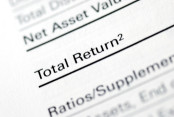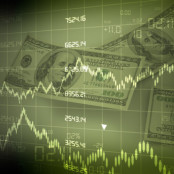[Updated on March 22, 2018 by Sam Bourgi] For investors, a company with cash can be a good sign. With extra cash, companies are able to serve their shareholders by raising dividends, buying back shares or making acquisitions. Below are seven charts that put massive corporate cash holdings in perspective.
*All data as of March 16, 2018.
Companies with the Most Corporate Cash
Apple (AAPL ) is by far the most cash-heavy company. It has twice as much cash as Microsoft (MSFT ), which has the second-highest amount of cash. Google parent Alphabet (GOOG), General Electric (GE ), Cisco (CSCO ) and Oracle (ORCL ) are also leaders when it comes to cash.
Note: The above figures are based on the latest quarterly and annual filings made by each company. These might be slightly different from the annual figures quoted elsewhere in this article.
Cash Growth
With the exception of General Electric, these companies have seen an increase in their cash holdings over the last three years. Apple’s cash has been visibly growing much more rapidly than its cash-holding peers.
Apple’s Cash Load
Apple’s cash constitutes more than 14% of all corporate cash holdings, excluding financial services. As of 2016 end, U.S. non-financial corporate borrowers approximately held onto $1.92 trillion in cash. This figure has grown from less than 10% in 2014. Other than the financial services industry, the two most cash-heavy industries are technology and healthcare. Apple’s cash represents more than one-third of all cash held by companies in the technology industry.
Technology Industry Vs. Malaysia
The most cash-heavy tech companies – Apple, Microsoft and Google – have enough corporate cash to exceed Malaysia’s cash reserves. All three companies exceed the amount, with Alphabet trailing by only a few billion.
North America Vs. The Dow 30
Dow stocks with the largest cash piles are Microsoft, Cisco and General Electric. Below are these five stocks compared to the North American foreign-exchange reserves.
Cash Vs. Dividends Paid in 2017
While the amount of cash spent on paying dividends seems small when compared to the total amount of cash, these stocks (excluding Alphabet) all offer attractive yields. Moreover, with Apple’s cash pile many investors feel that its dividend should be hiked significantly.
See Also: Why Google Doesn’t Pay a Dividend.
New Jersey Vs. Healthcare Companies
New Jersey is home to some of the largest pharmaceutical companies, including Pfizer (PFE ), Johnson & Johnson (JNJ ) and Merck (MRK ). Below is the comparison between the cash of the big healthcare names and the Gross State Product (GSP) of New Jersey.
The Bottom Line
With large amounts of cash on the books, many investors expect a decent dividend from some of these companies. Apple was criticized for not paying shareholders a dividend until it reinstated a dividend in 2012. Since then, the company has been a steady dividend payer, as reflected by its consistent dividend growth, attractive yield and high DARS rating. Some investors question why Alphabet does not pay a dividend when it has so much cash, but the company is not expected to start paying a dividend anytime in the foreseeable future.





